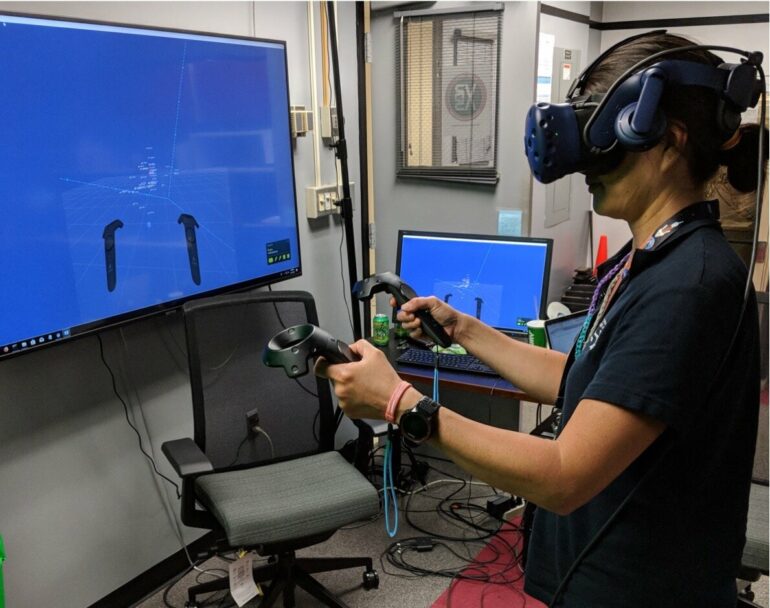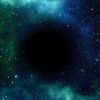Swirling disks of gas and dust, the stuff that could one day form planets, surround young stars. Through NASA’s Disk Detective program, citizen scientists—volunteers from the public—collaborate with professional scientists to help search for dusty disks around nearby stars, revealing clues to the early lives of stars and the ingredients of planets.
Since the program began in 2014, citizen scientists have identified more than 40,000 disk candidates using data from NASA’s Wide-field Infrared Survey Explorer, WISE, mission, which now operates as NEOWISE, as well as other surveys. Equipped with so many examples of possible disks, researchers next wanted to find out: How old are these disks?
Scientists turned to virtual reality (VR) to tackle this complicated question. A team led by Thomas Grubb at NASA’s Goddard Space Flight Center in Greenbelt, Maryland, developed custom VR software, called PointCloudsVR, specifically for Disk Detective to allow scientists to explore the galaxy in a brand new way. Researchers presented their first VR-enabled discoveries, including the ages of 10 stars with disks, on Tuesday, June 14, at the summer meeting of the American Astronomical Society in Pasadena, California.
“Young stars like the ones we study often form in groups—and when we view our data in VR it enables us to see things from a new perspective. It can be easier to spot these groups,” said Susan Higashio, lead author of the Disk Detective team’s new paper, accepted for publication in The Astrophysical Journal. She conducted this work as a visiting researcher at Goddard and has since moved into the aerospace industry.
Higashio flew through the Milky Way with a VR headset strapped to her face. In the virtual environment, each star is a labeled dot encoded with position and velocity information from Gaia, an ESA (European Space Agency) mission. The software, designed by Goddard engineer Matthew Brandt, simulates the stars moving over time in 3D, looking like a dense cloud that spreads out into a chaotic sea of data. Since the 40,000 stars with disks that the citizen scientists found are color-coded, Higashio looked to see if any of them moved with groups of stars called young stellar associations, which orbit the galaxy as teams. This is important because stars that move together likely formed at the same time, created as a result of the same cosmic event.
In the new study, Higashio and colleagues found 10 of the citizen-science star discoveries in young stellar associations. This allowed them to determine ages for each dusty disk star, ranging from about 18 to 133 million years old.
“Now we can place them in a time sequence, and they become part of the story of how disks form and evolve and how planets form and evolve,” said co-author Marc Kuchner, NASA’s Citizen Science Officer and an astrophysicist based at Goddard.
One of these stars with disks has proven to be an oddball—scientists call it an extreme debris disk. That’s because it seems to have too much dust for its age of 45 million years. By then, much more of the dust should have spiraled into the star or blown away into space.
The scientists also identified a young stellar association that hadn’t previously been known. Higashio’s team informally calls this group “Smethells 165” after the name of its brightest star, cataloged by astronomer William George Smethells. The group’s stars are all small, faint red dwarfs.
The Disk Detective project is still hard at work, searching for more disks. Says Disk Detective citizen scientist Lisa Stiller, “We are all part of a great team that works to make new discoveries in astronomy.”
Anyone can help join the search for more stars with dusty disks. Visit diskdetective.org to participate.
To find more NASA citizen science projects, check out science.nasa.gov/citizenscience
More information:
Susan Higashio et al, Disks in Nearby Young Stellar Associations Found Via Virtual Reality. arXiv:2205.09133v1 [astro-ph.SR], arxiv.org/abs/2205.09133
Provided by
NASA’s Goddard Space Flight Center
Citation:
Citizen scientists and VR software lend new insights to NASA data (2022, June 15)



